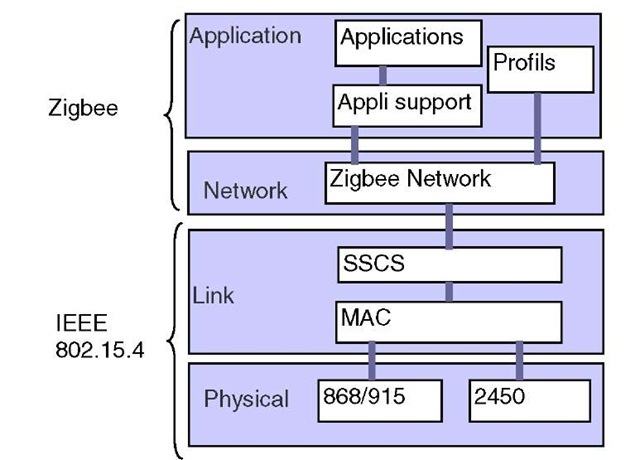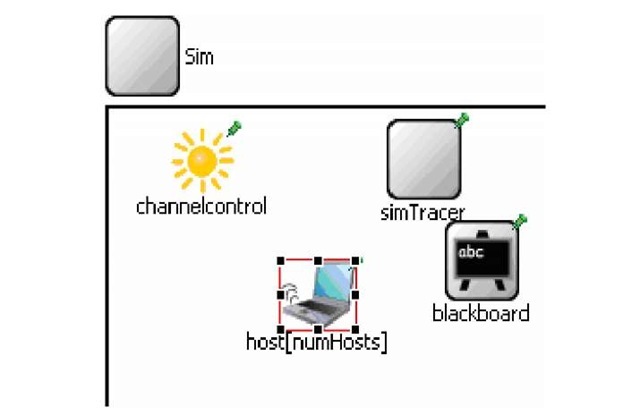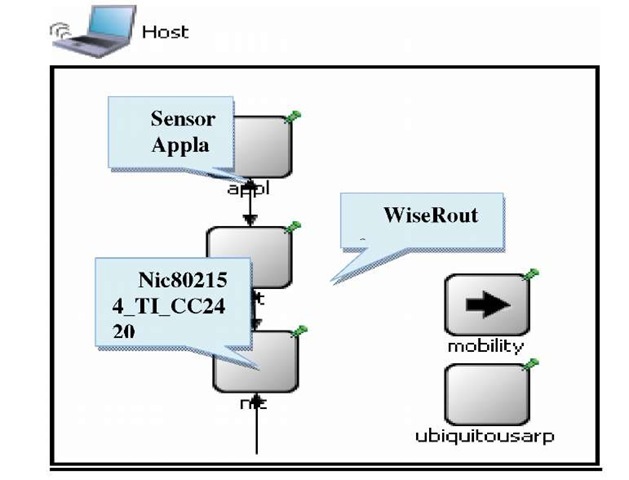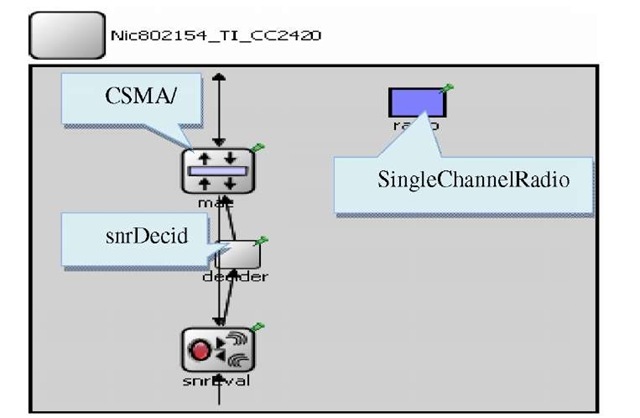Abstract
Wireless sensor networks (WSN) were been explored in various scenarios and several protocols have been developed. With the standardization of the IEEE 802.15.4 protocol, sensor networks became interesting for application in industrial automation. The IEEE 802.15.4 specifies physical and media access control layers that could be optimized to ensure low-power consumption. The focus in this paper is on real-time capabilities and reliability. We analyzed and compared the performance of the IEEE 802.15.4 standard using OMNET++ Simulator. Among the objectives of our study is to outline which degree the standard accomplish real time requirements. Different application scenarios were been evaluated. Performance parameters such as data delivery delay and goodput are the main factors, which been considered in our study. We have focused on single sink scenarios and we have analyzed some network performance according to nodes number. Our simulation results can be explored for planning and deploying IEEE 802.15.4 based sensor networks with specific performance demands. Besides, specific protocol limitations in real time environment can be identified and solutions can be suggested.
Keywords: IEEE 802.15.4; Zigbee; OMNET++; Real time.
Introduction
Recent development of communication technology has facilitated the expansion of the wireless sensors networks (WSN) [1][2][3]. The applicable area of WSN includes military sensing, data broadcasting [4], environmental monitoring [6], Intelligent Vehicular Systems [7], multimedia [8], patient monitoring [9], agriculture [10] [11], industrial automation [12] [13] [14] and audio [15] etc. WSN networks have not yet achieved widespread deployments, although they have been proven capable to meet the requirements of many applications categories. WSN has some limitations as lower computing power, smaller storage devices, narrower network bandwidth and very lower battery power.
Real-time applications of a WSN [5] require the sensor network paradigm to provide mechanisms that guarantee a certain level of quality of service (QoS). Whereas the main objective in sensor network research is minimizing energy consumption, mechanisms that deliver application-level QoS efficiently and map these requirements to network-layer metrics, such as jitter and latency, have not get major concerns. Data delivery delay in WSN presents specific system design challenges, which is the object of this article.
The remainder of this article is organized as follows. Section 2 gives related works of real-time application using WSN. In section 3, we present a brief overview of the IEEE 802.15.4 protocol specifications. In section 4, we consider scenarios implemented over OMNET++ to discuss performance trends and trade-offs for real time application. In section 5, we offer some concluding remarks.
Related works
In [16], authors have studied the applicability of IEEE 802.15.4 based solutions in industrial automation focusing on its real-time capabilities. Their objective is to verify whether the protocol meets all the demands in industrial automation fields. Besides, they have evaluated the protocol with analytical methods focusing on its capabilities for real-time operation.
In [17], authors have elaborated an architecture that uses the wireless protocol 802.15.4/ZigBee in a Home Automation and where it is necessary to transmit traffic flows of time-critical control data between sensors and actuators and automation network.
In [18], authors demonstrate ZigBee’s performance in several practical applications. For this purpose, authors have explained an experimental testbed setup and execution. The testbed is capable of measuring the minimum, maximum, and average received signal strength indicator (RSSI), packet loss rate (PLR), packet error rate (PER), bit error rate (BER), and the bit error locations.
In [19], the authors have presented a set of simulation experiments results to better understanding the protocol behaviour. Their results outline the capabilities and limitations of this protocol in the selected scenario. They considered the dependency of the protocol to different traffic loads and to on protocol-inherent parameters such as superframe order and the beacon order.
In this paper, we evaluate the IEEE 802.15.4 performance with a special focus on industrial sensor network applications.
Overview of the IEEE 802.15.4 Protocol Specifications
Description
The 802.15.4[20] is a part of the IEEE standards family for physical and link-layers for wireless personal area networks (WPANs). The WPAN working group focuses on short-range wireless links. The main IEEE 802.15.4 focus is to provide low data rate WPANs (0.01 – 250 kbit/s) with simple or no quality of service (QoS) and low complexity and rigorous power consumption requirements. The standard differentiates between full function device (FFD), and reduced function device (RFD), intended for use in the simplest of devices. The protocol stack upper layers are defined by the ZigBee Alliance [21] [22]. These layers correspond to the Application Layer (APL) and the Network Layer (NWL), as illustrated in Fig.1.
The IEEE 802.15.4 supports two physical options. The 868/915 MHz PHY known as low-band uses binary phase shift keying (BPSK) modulation whereas the 2.4 GHz PHY (high-band) uses Offset Quadrature Phase Shift Keying (OQPSK) modulation. The MAC layer provides sleep mode feature based on superframes bounded by the beacons. This feature is available only in the synchronized network. The ZigBee network (NWK) layer offers services for devices to join and leave a network, to discover and maintain routes between devices for unicast, multicast or broadcast packets and to guarantee security to data frames at network layer. The main functionalities for devices to maintain bindings, which are device groupings based upon application communication needs are provided at the ZigBee application services (APS) layer. Finally, the ZigBee application framework (AF) layer identifies a device’s potential services as dictated by a given AF profile. Each ZigBee Alliance approved profile describes message formats and the network configuration parameters necessary for devices of similar interest to communicate successfully.
Fig. 1. IEEE 802.15.4/Zigbee protocol stack
MAC Access Mechanisms & Frame Structure
The MAC protocol in IEEE 802.15.4 can operate on both beacon enabled and non-beacon modes. In the non-beacon mode, a protocol is a simple Carrier Sense Multiple Access with Collision Avoidance (CSMA-CA). This necessitates a constant reception of possible incoming data. In our simulation works, we have considered this mode. In the beacon-enabled mode, all communications are executed in a super-frame structure. The standard allows the optional use of a super-frame structure which is sent by the coordinator bounded by network beacons. It is divided into sixteen equally sized slots. A device can transmit at any time during the slot, but must finish before the next superframe beacon. The channel access during the time slots is contention based. For applications requiring specific data bandwidth and low latency, the network coordinator may dedicate portions of the active super-frame to that application. These portions are named guaranteed time slots (GTS). The GTS that form the contention free period (CFP), always appear at the end of the contention access period (CAP). All contention-based transactions should be achieved before the CFP begins.
Three additional headers are added to the outgoing data frames in the ZigBee implementations in order to perform the following services. In entire, ZigBee headers occupy 15 octets of overhead for each data frame. The complete IEEE 802.15.4 frame structure is represented in Fig.2.
Fig.2. IEEE 802.15.4 Frame structure
The physical packet includes many fields that correspond to the preamble (32 bits) for synchronization, the start of packet delimiter (8 bits) which shall be equal as "11100101", the physical header (8 bits) and the data field (PSDU: Payload Segment Data Unit) which has a variable length (0 to 1016 bits). The MAC frame structure is designed to keep the complexity at a minimum while ensuring they are sufficiently robust to be transmitted on a noisy channel. A MAC frame is composed of three fields including a MAC header (MHR), a MAC service data unit (MSDU), and a MAC footer (MFR). The frame control field (2 bytes) which is the first field of the MHR It indicates the type of the MAC frame (acknowledgement frame, data frame, beacon frame and MAC command frames), specifies format of the address field, and controls acknowledgement. The second subfield is the sequence number is used to identify successful transmission of a frame. The address field length is variable of 0 to 20 bytes. Based on the frame type, the address field may include source and destination addresses, no address or destination address. The payload (MSDU) length is variable with a restriction of 127 bytes for the complete MAC frame. The MFR corresponds to the frame check sequence (FCS) is a 16 bits used to ensure data integrity.
IEEE 802.15.4 Performance Analysis for Real Time Application
In this section, we are interested in wireless sensors networks performances analysis for real times applications. The performance evaluation is performed using a simulation model of IEEE 802.15.4 under OMNeT++ [23][24]. In this section, we introduced this model and we described the simulation settings.
Simulations Modules
The principles modules constituting the IEEE 802.15.4 network (shown in Fig.3) are the Sim module, the host module and the Nic802154_TI_CC2420 module.
Fig. 3. IEEE802.15.4 network.ned module
- Host Module is the node that sends and receives the messages.
- BlackBoard is an entity that allows the communication inters layer/process. It builds the total knowledge of the hosts or relevant information for more than one layer accessible for modules derived from BlackBoard Acces. Each module derived from BlackBoardAcces is able to publish information in BlackBoard.
- SimTracer allows to record vectors in files .vec (result of simulation).
- ChannelControl is a framework module that allows controlling connections. It coordinates connections between all the nodes.
The Host module it contains four simple modules and a compound module. Those modules are SensorApplaye, WiseRoute, UbiquitousArp and Nic802154_TI_CC2420. Fig.4 illustrates the host module.
- SensorApplayer it implements the higher layers
- WiseRouteis the basic class for the network layer; it is a generic class for all modules of network layer.
- ConstSpeedMobility it controls all the nodes movements. UbiquitousArpis a module that implement address resolution protocol.
- Nic802154_TI_CC2420 module is a compound module and the structure of this module is illustrated below by Fig.5.
- Nic802154_TI_CC2420 module contains 4 simple modules:
- MAC module is based on CSMA/CA algorithm.
- SnrEval can be used in order to consider some information for the received messages since the module.
Fig. 4. IEEE802.15.4 Host.ned module
- SnrDecider processes the received data to verify the message integrity then to decide if the message can be dropped. In order to take decision the Snr decider takes the snrList created by snrEval and translates SNR values to the bit state (with or without error).
- SingleChannelRadioAccNoise3 contains the Nic802154_TI_CC2420 parameters.
Fig. 5. Nic802154_TI_CC2420.ned





